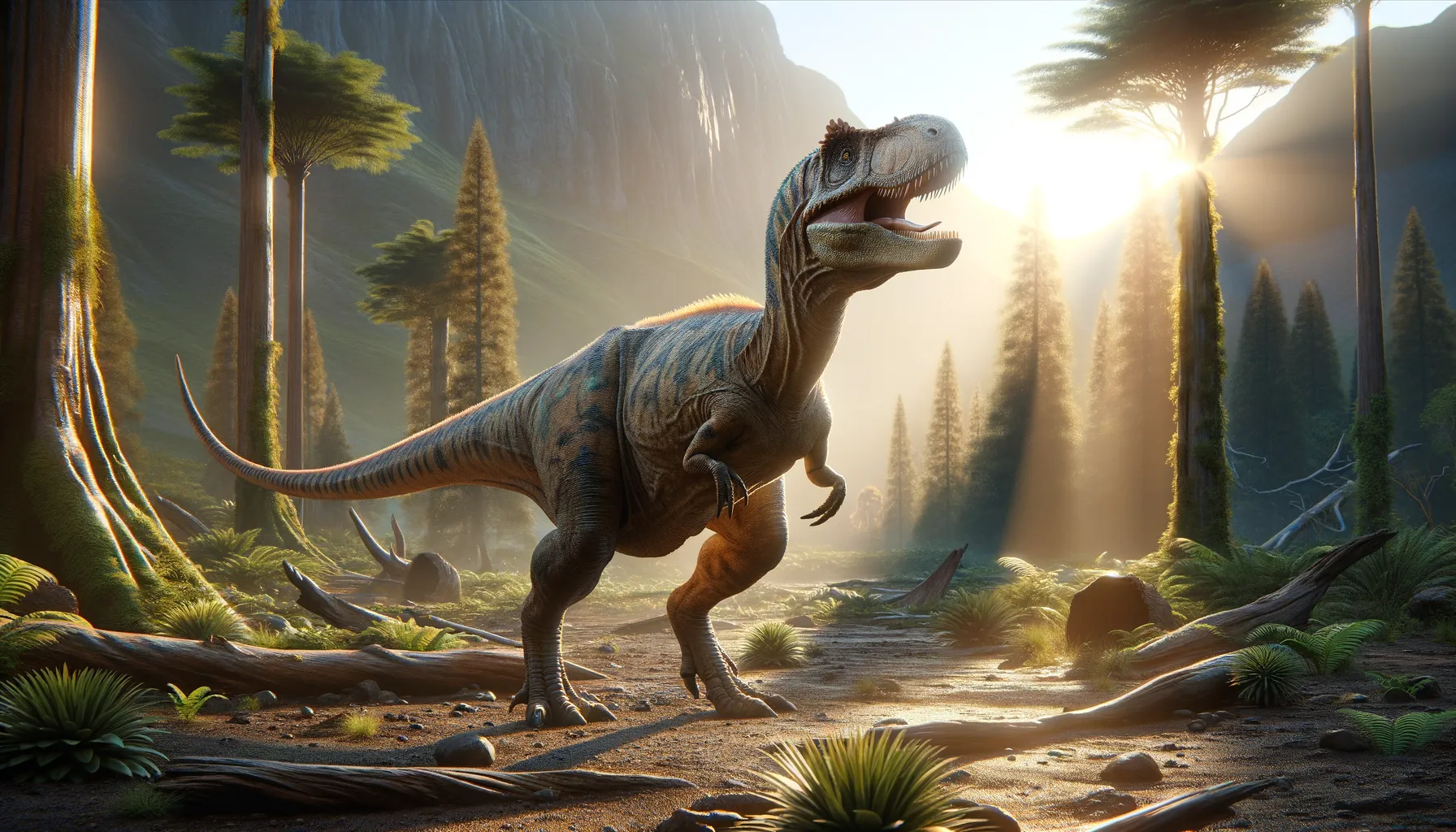
Camarillasaurus
Discover the secrets of ancient Spain!
Period
Cretaceous
Length
Around 6 to 7 meters long.
Height
Approximately 2 meters tall at the hip.
Weight
Estimated to be around 400 to 600 kg.
Camarillasaurus was a relatively small theropod dinosaur that lived during the Early Cretaceous period. First discovered in Spain, it provides insight into the diverse dinosaur fauna of the region. Its fossil remains suggest a creature that was medium-sized, bipedal, and potentially capable of opportunistic feeding habits. Although information is limited, Camarillasaurus adds to our understanding of the variety of theropods that inhabited prehistoric Europe.
Diet
Camarillasaurus likely had a carnivorous diet, feeding on small vertebrates and possibly scavenging on larger carcasses. Its teeth and jaw structure suggest it was an opportunistic predator.
Hunting
As a moderately sized theropod, it probably relied on stealth and surprise to capture prey. Its hunting behavior might have included stalking through vegetation and using bursts of speed to catch small animals.
Environmental challenges
Camarillasaurus existed in a period of geographic changes, where shifting landmasses and climate variations posed challenges. It had to adapt to occasional changes in food availability and potentially compete with other predators. These challenges would have required flexibility in its diet and behavior.
Speed
Moderate, likely not very fast.
Lifespan
Estimated to be around 20 to 30 years.
First discovery
First discovered in the early 21st century in Spain.
Fun Facts
- Camarillasaurus lived during the Early Cretaceous period, about 130 million years ago.
- It was discovered in Spain, adding to the evidence that Europe had its own unique dinosaur species.
- Camarillasaurus was likely a theropod, meaning it was a bipedal, meat-eating dinosaur.
- The fossils of Camarillasaurus were found in the Camarillas Formation, which is how the dinosaur got its name.
- Its remains are mostly partial bones, so scientists are still learning more about its exact appearance and size.
- Camarillasaurus adds to our understanding of dinosaur diversity and distribution in ancient Europe.
Growth and Development
The growth rate of Camarillasaurus might have been relatively slow, allowing it to adapt to its ecological niche. Juveniles would have needed to learn foraging techniques and develop survival skills early on. As it matured, changes in its skeletal structure would have supported a more robust body suitable for hunting.
Habitat
Camarillasaurus lived in a diverse environment with forests, rivers, and open plains. This variety in its habitat offered both food resources and refuges from larger predators. The climate of the period would have influenced its behavior and migration patterns.
Interaction with other species
Camarillasaurus coexisted with other dinosaurs, some of which were likely competitors for food. It may have participated in niche partitioning, where it adapted to feed on different prey to avoid direct competition. Additionally, it shared its habitat with herbivorous dinosaurs.
Natural lifespan
It had an estimated natural lifespan of about 20 to 30 years.
Reproduction
Camarillasaurus, like other theropods, likely laid eggs in nests. Parental care might have been limited, but ensuring a safe nesting environment was crucial. The reproductive cycle and success were influenced by environmental conditions, which determined the availability of suitable nesting sites.
Social behaviour
While definite social behavior is hard to determine, Camarillasaurus may have exhibited solitary behavior typical of many predators. However, there could have been periods of social interaction during breeding or in areas with abundant prey. Understanding its social structure remains speculative.
Fossil locations
Fossils of Camarillasaurus have been predominantly found in Spain, offering insights into the dinosaur fauna of Europe during the Early Cretaceous. The specific locations of these fossils have helped reconstruct the ecosystem and understand the species' distribution range.
